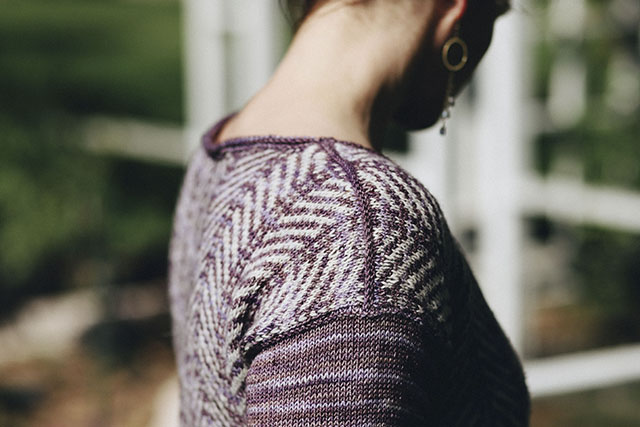Everything I know about knitting socks can fit in this box.
The Year of the Sock came and went. I’m finally ready to post photos of something besides socks. That’s a good thing because I think all of my non-knitting friends were beginning to think I had a weirdo sock fetish. It’s all worth it, though, to know that I persevered and knit 12 pairs of socks for the Box o Sox Knit-along before Jan 1 and I learned exactly what I like in a sock.
Note: There will be a bizarre number of photos because I wanted to catch all of the labels. Oh, and there will be a few more socks.
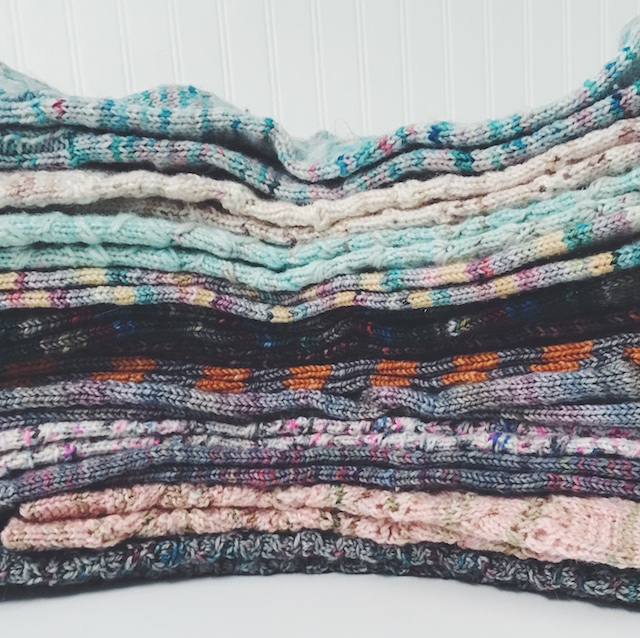

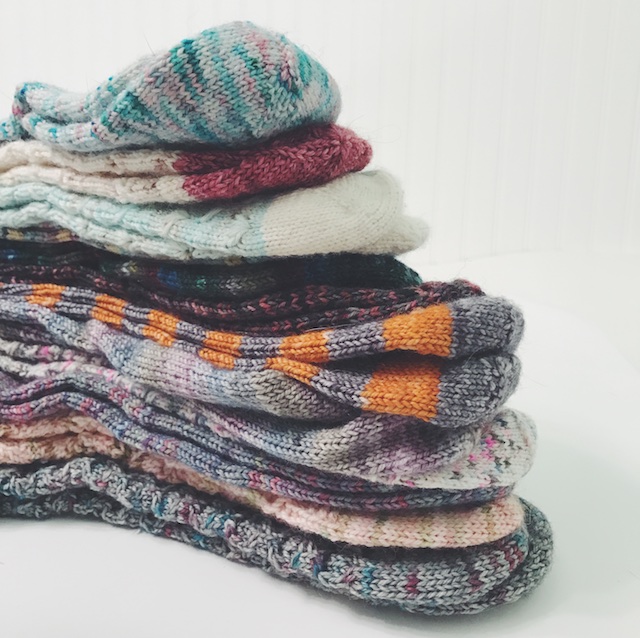
Look at them, all rolled up, shiny and un-pilled.
Look at them, mocking me with their floppy cuffs and dropped stitches that weren’t discovered until the ends were woven.


I probably wouldn’t have found it so difficult to complete this project if I didn’t overcommit with knit-alongs and gift knitting, etc. But, it’s done and I’m pleased to say that every pair fits perfectly, at least in the foot. It’s just those toe-up cuffs that seem loose.
This occasion called for a special box, so I gathered some of my yarn labels and decoupaged them to an old Gola shoe box. I truly did feel like a weirdo after that quick little project turned into hours of tediousness, with glue all over my fingers and a crick in my neck.
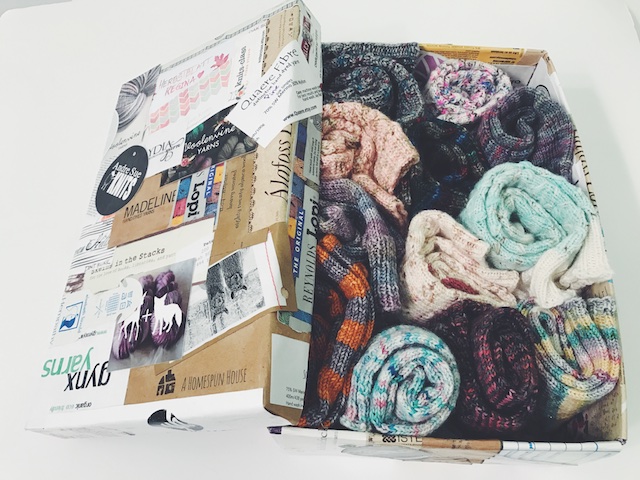
Had I realized another knitter had already glued yarn labels to her box, I wouldn’t even have finished. But, I’m kind of glad I did because they were just taking up space in my supplies box and it’s nice to have a readily visible memento of the yarns I’ve used. A couple are even from ones I haven’t used yet. I may regret doing that…

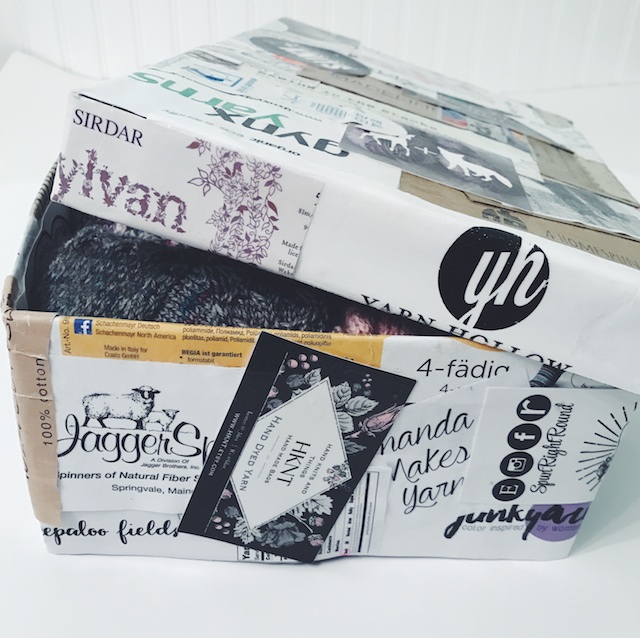
Mine is also a little different in that these are many labels I’ve been saving for years, from all sorts of yarn. It’s not BoxoSox-specific. It also required many, many layers of Mod Podge. (Insert Eyeroll)


Here’s the rundown on my Year of the Sock:
I tried to hit on most of the techniques I’d heard of, and a few I hadn’t. At first, it was just a basic cuff-down (Graynbow socks). Then I broadened to knitting toe-up and two-at-a-time (Two at Once, Toe Up, Magic Loop socks). For those, I also did a new cast on that involved knitting into the purl bumps of half the usual amount of stitches in order to easily get started with magic loop.
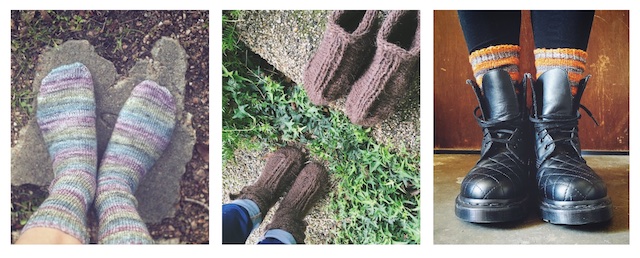
I took a break from regular socks to knit myself and my husband lopi house shoes. This was a true break, as it was bulky and rustic yarn- completely different in my hands (Inniskór Slippers). They didn’t really qualify for the Box o Sox KAL, but to me they completely count.
I wanted to try patterns that intimidated me a little, with all of the cables and lace (Springtastic Socks, Wildflowers and Honeycomb, and Fine and Dandy). It was in doing this that I realized a 56 stitch count sock fits me best, but if more are necessary for a pattern, they look fine when it’s a shorter length sock. I also decided I like shorter 4″ cuffs best.
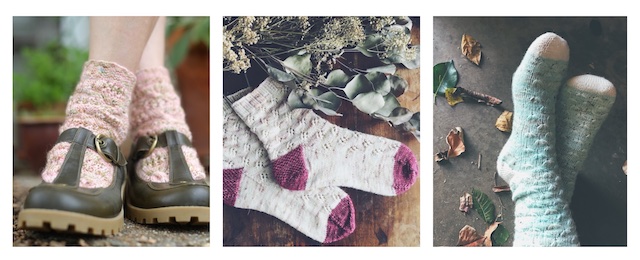
I tried contrast heels/ toes/ and cuffs (Wildflowers and Honeycomb, Fine and Dandy, Confetti and Champagná) and even did a weird thing by cutting a self-striping yarn to sort of get a contrast heel. That was a mess.

I enjoyed using variegated yarn for vanilla socks (Hydrangea Socks, Shield Maiden Socks, I Heart Bees and Vintage Christmas Socks) and for the most patterned sock I’ve ever seen (Springtastic Socks). And I liked it. Then there were speckled socks (Speckled Space Socks), which I’ve always wanted to knit.
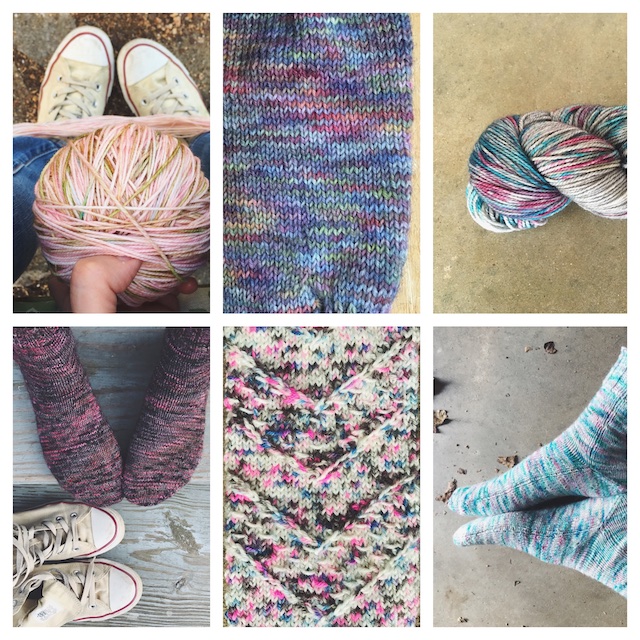
There were stripes aplenty this year and I’m sure there’ll be more in my future, especially since learning the afterthought heel.
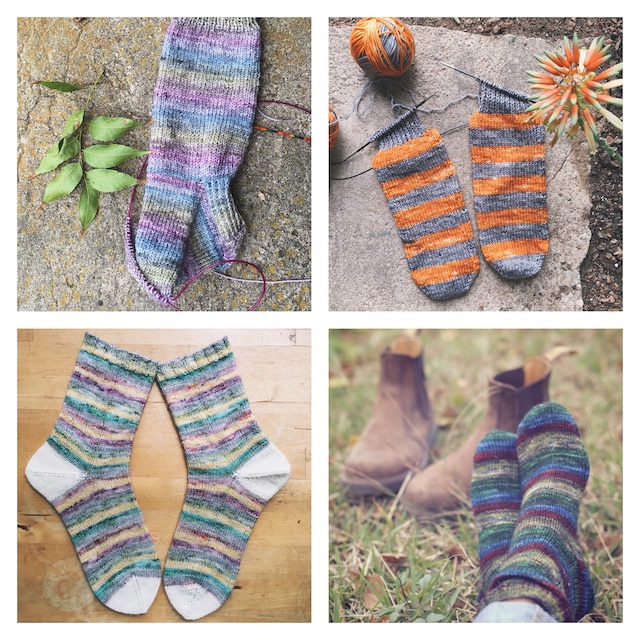
Somewhere along the way I decided to order a 9″ circular and try it on a stockinette sock (Hydrangea Socks). I didn’t even make it halfway through the first sock. It was like begging for arthritis. Size 0 or 1 circulars are torturous enough for me. So, it’s magic loop for me from now on and, since realizing I knit each of my I Heart Bees socks using a different needle size, I decided I do better when knitting both socks at once.
The Smooth Operator Socks pattern gave me plenty of practice with that technique. It’s meant to make knitting a “vanilla” sock as easy as possible. There were a lot of variations to try within the pattern, so I first tried the basic, long version of the pattern, which includes afterthought heels. (Confetti and Champagná). For this I learned to properly cast on two 56 stitch cuffs for knitting at once. I don’t know why I never took the time to do it all at once before this.
The next time, I added self-striping heels on self-striping socks and did them with a no-Kitchener method (Gynx’s Palette Socks). Next there was the no-Kitchener toe and gap-less afterthought heel (Shield Maiden Socks). And lastly, I applied most of those techniques to a pair of toe-up socks (Vintage Christmas Socks).

So, I think I learned about 4 different heel methods: regular slip stitch, eye of partridge, a horizontal slip stitch, and afterthought heels.
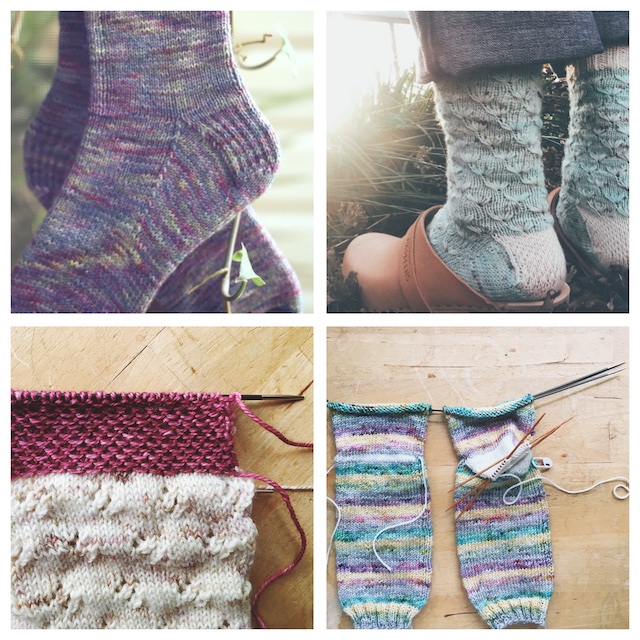
There were three toe methods, too: Kitchener, that odd, even decrease, and the no-Kitchener method. (Neither of the last two require a Kitchener stitch.)
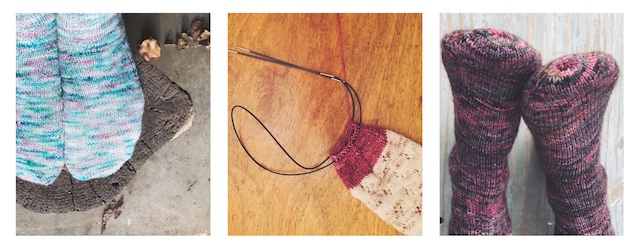
All of this is to say that I have my own personal sock recipe. Me! I remember reading about other knitters formulating them and thinking there was no way I’d ever be that comfortable knitting socks. I thought I’d always be glued to a pattern and walking around in floppy socks. Apparently, I’ll just be walking around with floppy cuffs. A win!
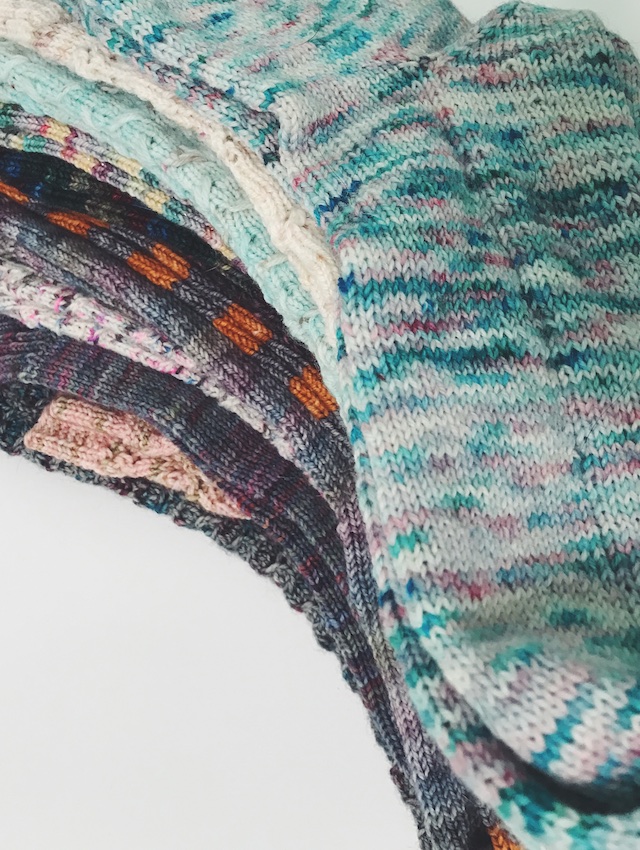
My Sock Recipe, because this blog is where I store things:
I prefer size US 0 circulars, sport weight sock yarn or a plump fingering weight.
If I’m planning on doing a contrast heel I figured I need 7g of a different yarn. I’ll need no more than 20g to do cuffs and toes too.
If I’m using a different portion of the same self-striping yarn as a contrast heel, I should unwind it from the ball before casting on.
I cast on 56 stitches for my feet.
My actual foot is 9 3/4 ” from toes to back of heels.
For toe-up socks:
Judy’s Magic Cast-on, possibly two at a time. But I did try knitting into the purl bumps of a 12 stitch cast on the create 24 sts. This makes two-at-time, magic loop easier.
For traditional heel gussets:
I knit 5 3/4″ from toe to beginning of gussets.
At heel flap, change color.
I like slip stitch and eye of partridge heel flaps.
If it’s an afterthought heel:
Use high contrast yarn as waste yarn, knitting more than the usual row (as per Smooth Operator)
I knit 7.5″ from toe to waste yarn.
When knitting in the heel, use the gap-less method (also Smooth Operator)
I liked 4″ cuffs best, but anywhere from 4-6″ is fine for a normal sock.
2″ cuff, in 2×2 rib.
Jeny’s Surprisingly Stretchy Bind-off is the best I’ve found so far. But I have to make sure I don’t cast off loosely.
If I’m knitting cuff-down socks, my preference:
Cast on both cuffs at once.
I prefer a 4-6″ leg. 4″ works really well with hi-tops.
2″ of 1×1 twisted rib looks really nice, but 2×2 rib is my favorite.
For cuff-down afterthoughts (my favorite) – Use high contrast waste yarn to mark heel and knit more than the usual waste rows.
Use gap-less method.
After heel or waste yarn, knit 5.5″ from waste yarn to toe decreases
For traditional gusset heels– knit 3 7/8 ” from gussets to toe decreases.
Toes:
I prefer binding off at 24 stitches for a less pointed toe.
Either a rounded decrease (as per Smooth Operator) or traditional Kitchener. I usually reinforce the toe as I weave in my ends.
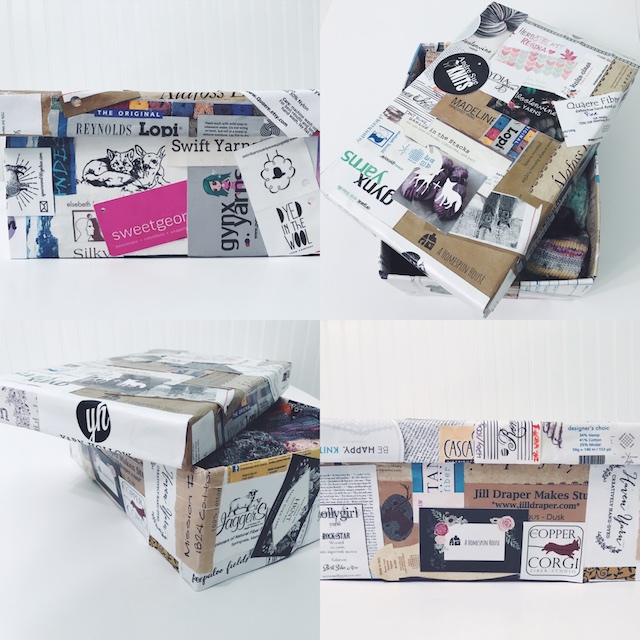
And that’s it… The year of the sock is officially over. 2017 will be the year of whatever I feel like I wanna do.
And now I’m putting my size 0 needles away for a looooooong time. I might, just maybe, try to knit some of the sock patterns I used last year in worsted weight yarn for stockings (like Tracie of The Grocery Girls). But only if I feel like it.
Oh, and happy New Year, bloggy friends!!

